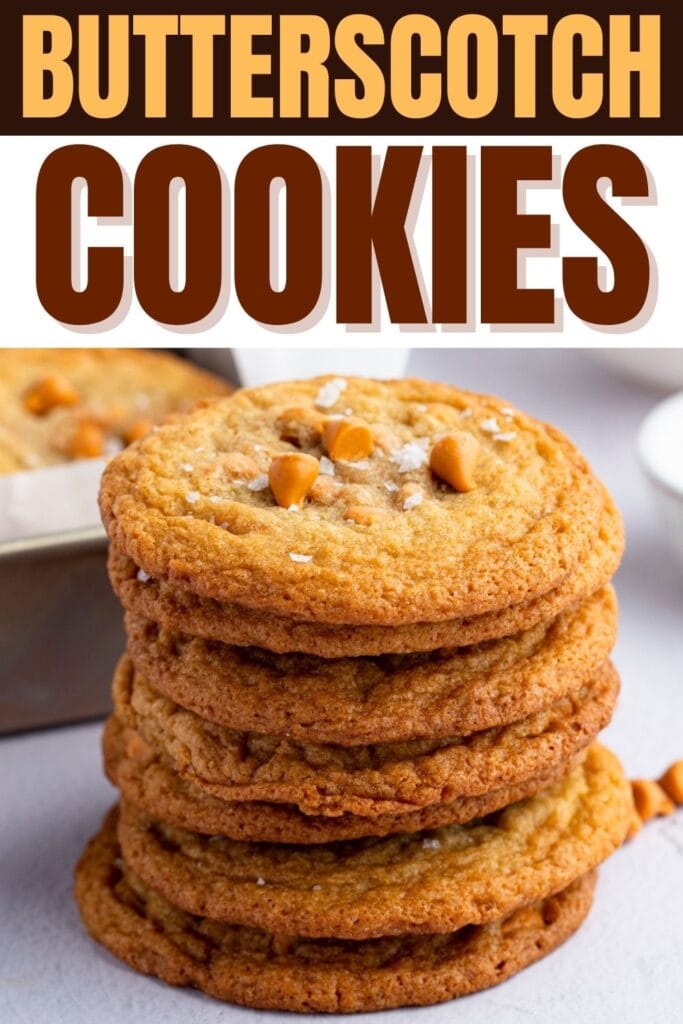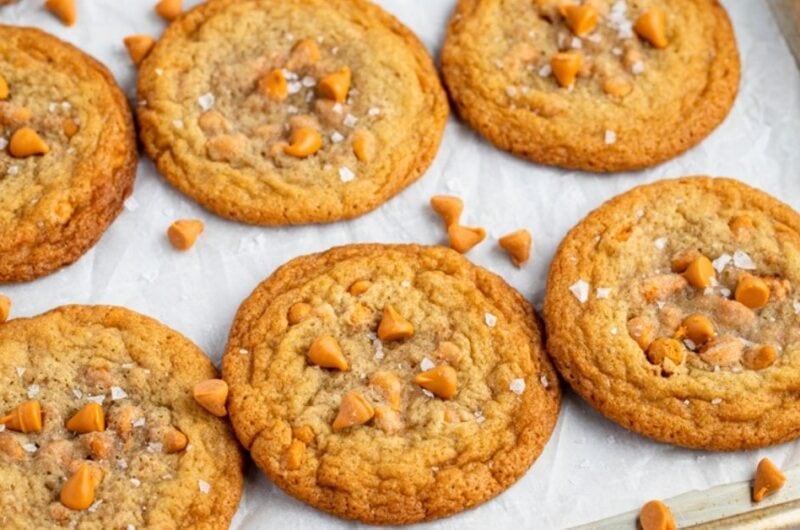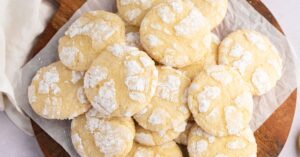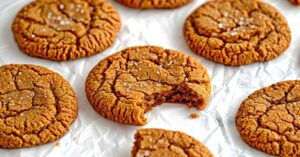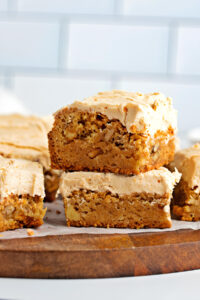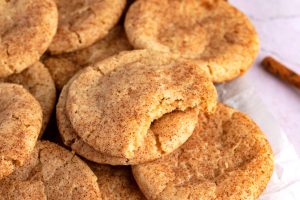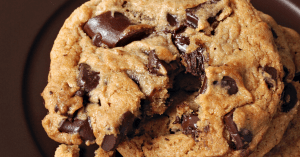While not as popular as the classic chocolate chip cookies, these butterscotch cookies deserve equal love and attention.
Crisp around the edges, soft and chewy in the middle, and sweet and salty in every bite – they’re a “batch” made in heaven.
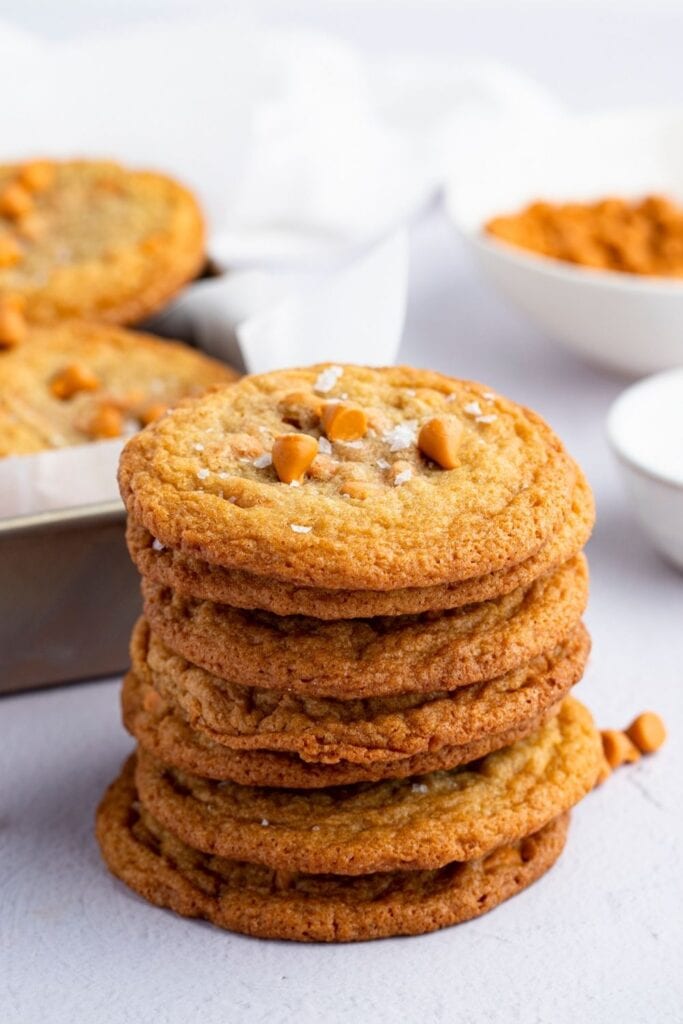
If you’re looking to amp up your cookie gaming, this recipe is a must-try. You guys, these cookies are so soft and chewy, it’s ridiculous!
If you love the sweet and salty flavor profile, you’ll surely enjoy these delights.
Add more excitement to your usual cookies – butterscotch is all you need. Let’s do this!
Easy Butterscotch Cookies Recipe
I love all the different types of cookies. But if I’m being honest, I prefer butterscotch cookies over chocolate chip cookies.
There’s just something about the sweet and salty flavor profile that’s so outrageously addictive!
Butterscotch chips give these cookies their unique flavor – sweet, salty, buttery, and caramel-like. If this doesn’t make your taste buds happy, I don’t know what will.
The texture is extraordinary, to boot. They’re crisp yet soft, chewy and ooey-gooey, and absolutely phenomenal.
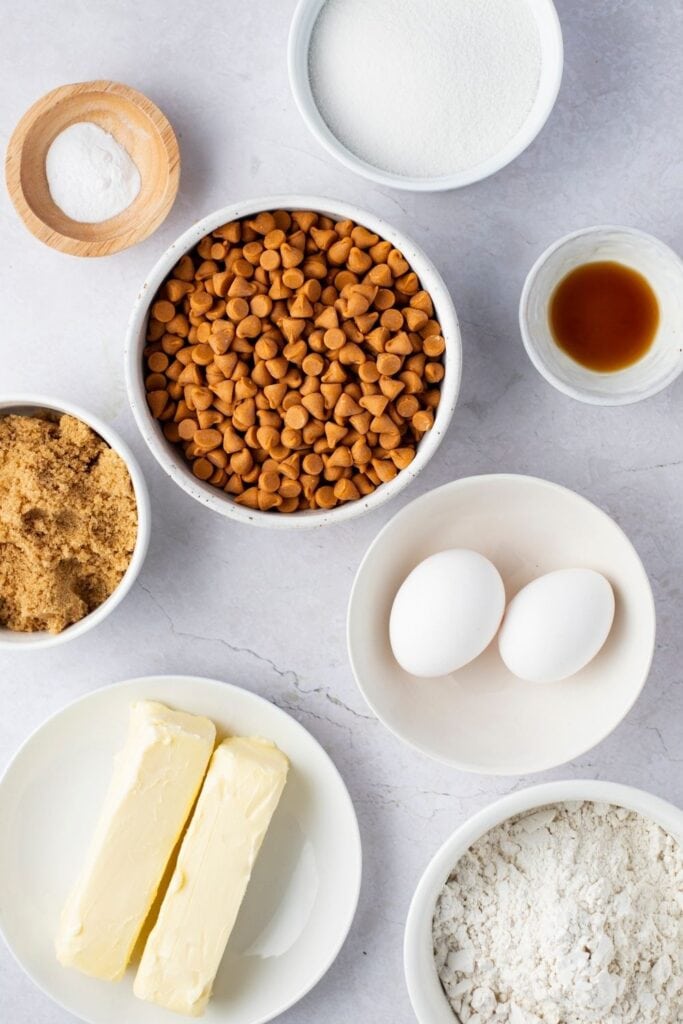
What Are Butterscotch Cookies Made Of?
You won’t find any surprises in this recipe.
In fact, other than the butterscotch chips, this looks like any other chocolate chip cookie recipe around.
- All-Purpose Flour – The base that gives the cookies their structure.
- Baking Soda – The leavening agent that ensures the cookies rise.
- Salt – It balances out the sweetness of the sugars.
- Butter – Use real butter instead of margarine. And be sure it’s at room temperature so it mixes well.
- Granulated Sugar and Brown Sugar – This recipe calls for both granulated and brown sugar to create the perfect cookie texture.
- Brown sugar contains molasses, which makes the cookies super soft and chewy, with a mild caramel-like flavor.
- White sugar makes it sweet and lightly crisp around the edges.
- Vanilla – The magic flavor enhancer.
- Eggs – For binding the ingredients together. Use room-temperature eggs so they mix well.
- Butterscotch Chips – These are butterscotch chips cookies, after all!
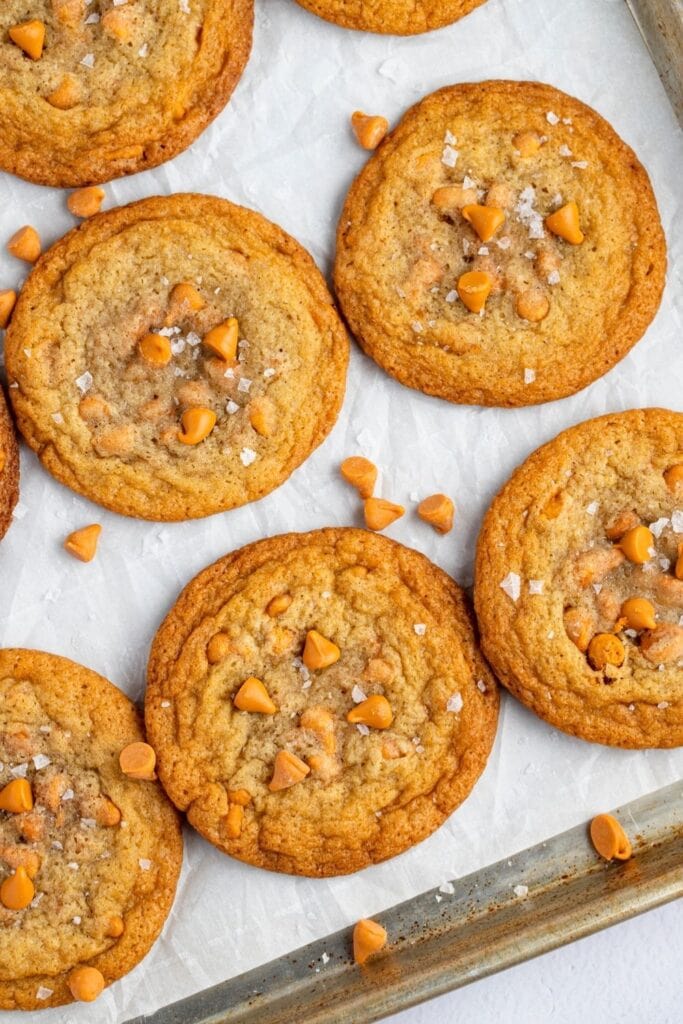
How to Make Butterscotch Cookies
1. Preheat the oven to 375 degrees Fahrenheit.
There’s no need to grease your cookie sheet for these cookies, as this will cause them to overspread. Just line them with parchment paper, and you’re set.
2. Sift the dry ingredients.
Namely, the flour, baking soda, and salt. This distributes the baking soda and helps to create a smooth dough.
3. Cream the butter and sugars, then incorporate the eggs and vanilla.
In a separate bowl, beat the softened butter and sugars at medium speed for 4 to 8 minutes, or until light and fluffy.
Then, add the eggs one by one, beating well after each addition. Mix in the vanilla.
4. Combine the dry and wet ingredients.
Gradually pour the flour mixture into the wet bowl and mix with a rubber spatula just until combined. Stop as soon as you no longer see streaks of flour.
5. Add the butterscotch.
If you have other mix-ins you’d like to add, now’s the time. Carefully mix them into the batter with a rubber spatula.
Lick the spoon – this is the best part!
6. Chill the dough.
I’m not a fan of waiting, so my recipe doesn’t require chilling the dough. However, it does enhance the flavor of the cookies and prevents overspreading.
If you can, chill the dough for at least 30 minutes. You can also speed it up by freezing the dough for 20 minutes.
7. Drop the dough onto the cookie sheet and bake.
Use a cookie scoop to make them even, and be sure to leave a couple of inches between each cookie.
Then, bake them for 8 to 10 minutes, and not a minute later. The longer you bake the cookies, the harder they’ll get.
They should be lightly golden around the edges, but still super soft in the middle.
8. Cool the cookies and serve.
Don’t take them off the sheets just yet. Give them 10 minutes to firm up and set.
Then, serve them with a glass of warm milk and enjoy!

Tips for Making The Best Cookies
If you’ve never made cookies before, don’t worry. I have a few tips to make sure yours come out perfect!
- Cream the butter and sugar well – It should take about 5-8 minutes, and it should look like a pale, grainy paste.
- Use a kitchen scale or the spoon and level method to measure the flour – If you just scoop it into a cup, it’ll pack in, giving you more than you need. So, either spoon it in and level it off with the back of a knife, or weigh it (you’ll need 306 grams).
- Don’t overmix the dough – This often happens when you use a mixer or electric hand whisk. And it’s why you get dry cookies. So, use a spatula and mix the dough by hand.
- Chill the dough – I hate waiting as much as anyone, but a chilled dough does make better-tasting cookies. And it keeps them from spreading too much on the sheet. Thirty minutes is okay, 2 hours is better, but overnight is the ideal.
- Trust the process, and don’t overbake them – They won’t look completely done after 8-10 minutes, but they’ll keep cooking on the hot tray.
- Add extras to make them your own – I like mini chocolate chips, but you could add almond extract, mini marshmallows, or a sprinkling of sea salt.
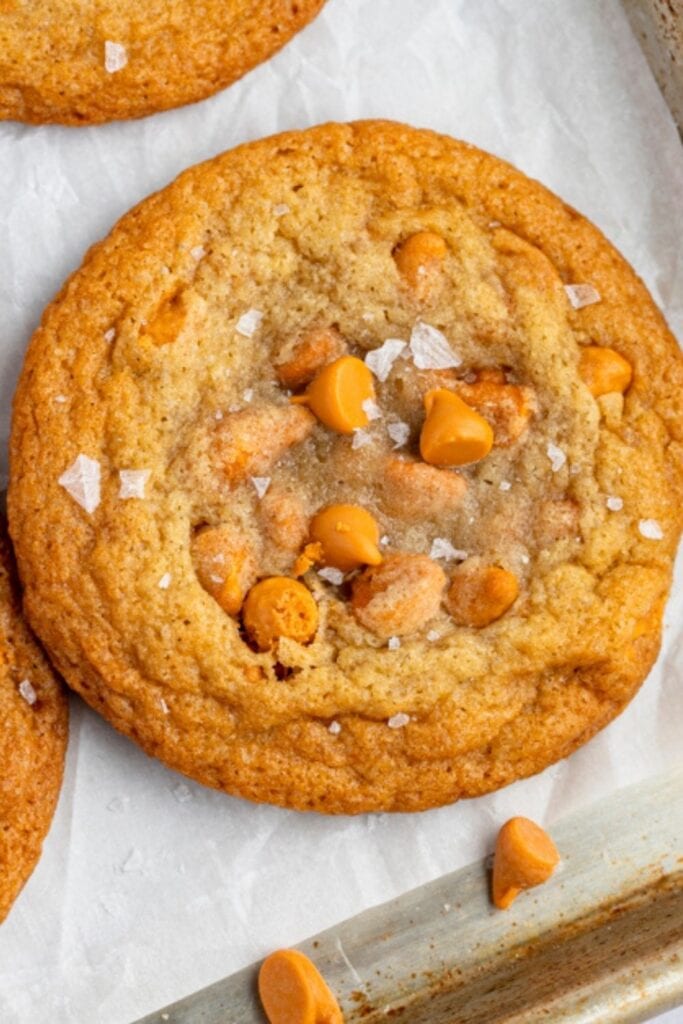
Can You Freeze Butterscotch Cookies?
Butterscotch cookies freeze beautifully.
You can freeze either baked cookies or raw dough, and they’ll keep well for up to 3 months.
How to Freeze Baked Cookies:
- Let the cookies cool completely.
- Place them on a baking sheet and freeze for 2 to 3 hours, or until rock solid.
- Transfer the cookies into a freezer-safe bag, with parchment paper in between to prevent sticking.
- Squeeze out as much excess air as you can before sealing, and label the bag accordingly.
- Let the cookies thaw at room temperature and warm them in the microwave for 10 to 15 seconds.
How to Freeze Butterscotch Cookie Dough:
- Drop spoonfuls of dough onto a cookie sheet and freeze for 2 to 3 hours, or until rock solid.
- Transfer the cookies to a freezer-safe bag.
- Squeeze out as much excess air as you can before sealing, and label the bag accordingly.
- Bake the cookies straight from the freezer, adding 1 to 2 minutes to the original baking time.
How to Store Butterscotch Cookies
Simply place them in an air-tight container or a cookie jar and leave them at room temperature for 1 to 2 weeks.
Note: Be sure to cool them completely before storing them.
More Cookie Recipes You’ll Love
- Subway White Chocolate Chip Cookies
- Soft and Chewy Chocolate Chip Cookies
- Samoa Cookies
- Snickerdoodle Cookies
- DoubleTree Chocolate Chip Cookies
